Sacred Images from the Levant & West Asia. https://gravatar.com/JoSullivanXXI
Last active 60 minutes ago
Don't wanna be here? Send us removal request.
Text

BW Edit after Assyrian artist of ca. 8th century BCE (Horse blinker carved in relief with a wedjat eye) (Metropolitan Museum of Art)
104 notes
·
View notes
Photo

Mirror with Handle in the Form of a Hathor Emblem
Period: New Kingdom Dynasty: Dynasty 18 Reign: Reign of Thutmose III Date: ca. 1479–1425 B.C. Geography: From Egypt, Upper Egypt; Thebes, Wadi Gabbanat el-Qurud, Wadi D, Tomb of the 3 Foreign Wives of Thutmose III Medium: Disk: Silver; handle: wood (modern) sheathed in gold (ancient)
Source: Met Museum
257 notes
·
View notes
Text
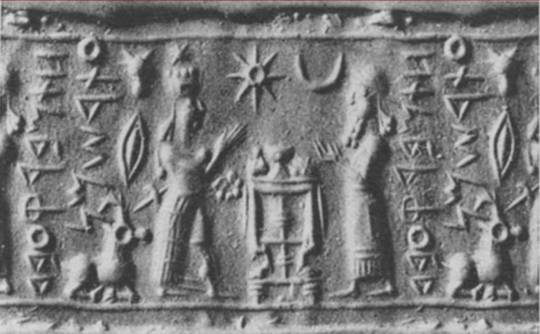
Attarshamayn and Worshiper Text in Old Aramaic, dedication of Baraq to the goddess Attarshamayn ("Attar of the Heavens", related to Attar, Atargatis, Astarte) 11-10th c. BCE, likely crafted in ancient Assyria. Acquired from Jableh, Syria. __________________________ Translated excerpt from: Antiquités syriennes Henri Seyrig Syria T. 32, Fasc. 1/2 (1955), pp. 29-48 (23 pages)
Atarshamayn. Pl. Ill, 5. Burnt carnelian. 21 X 9. Brought from Djeblé (Gabala). Goddess advancing on the right, dressed in a long split garment, a sword at her side, wearing a polos crowned with globules and surmounted by a star; she holds in her left hand a ring made of globules, and she raises her right hand; from her head, a dewlap falls to the height of her waist. Behind her, a recumbent ibex, a lozenge, a bucranium. In front of her, an offering table, laden with a footed vase, a bird, and another object. To the right, a bearded figure, long-robed, stands in the attitude of prayer, hands outstretched with palms in the air. Above the scene, crescent and eight-pointed star. In the field, inscription in Phoenician characters: HTM BRO BD TRSMN, seal of Baraq, servant of Atarshamayn. Note the archaic character of the letters, and in particular that of the daleth without a tail. This carefully crafted cylinder appears to belong to the class of Assyrian cylinders .11 from the 10th century (1). Phoenician characters were commonly used in these ancient times for the transcription of Aramaic, and do not allow us to conclude that the seal was engraved in Phoenicia. Moreover, if Baraq (2), the owner of the cylinder, had been Phoenician, his tutelary deity would not have borne an Aramaic name, where the element Atar is the equivalent of the Phoenician Ashtart. The fact that the cylinder was found in Gabala, in Phoenicia, is therefore probably fortuitous Atarshamayn, "Atar of the Heavens," is still known only from a single text, notably later than our cylinder. Around 640, Ashurba-nipal was campaigning against the Arab tribes of the Syrian Desert (3), and his annals specify that he then subdued "the band of Atarsamayn and the people of Oedar" (4). No doubt the people of Atarsamayn were Arabs, just as the people of Qedar were, and they were named after their principal deity. It was a form of the Lady of Heaven (I), whose cult is common to the Semites. Perhaps the warrior goddess, represented on the seal, is the one named in the inscription. This text seems to be composed with the decoration. Barak must have ordered his cylinder as we see it, and, in this case, it will seem natural that he had engraved on it the goddess whose servant he proclaims himself.
#atar#atargatis#atarshamayn#attar#attarshamayn#syrian gods#syrian polytheism#canaanite#canaanite gods#canaanite paganism#aramean#aramaic#human#aramean costume#gazelle#goddess#ashtar#ishtar#astarte#ashtart
48 notes
·
View notes
Text
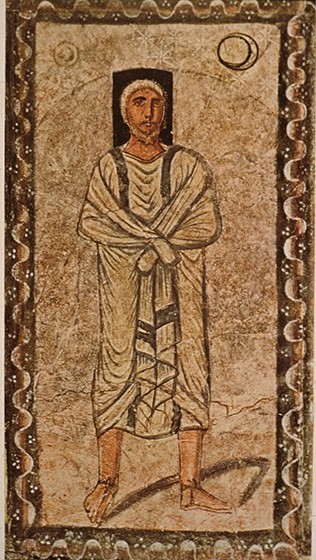
Fresco of Abraham from the Dura-Europos Synagogue
c. 244 CE, National Museum of Damascus
#jewish#abraham#jewish costume#syrian costume#aramean costume#prophet#patriarch#fresco#judaism#hellenism
22 notes
·
View notes
Text

Pater of Mithras (Dura Europos)
CIMRM 44 (vI.67): Palmyrene pater of the Roman cult of Mithras at Dura Europos (Syria), 3rd century Source: https://itoldya420.getarchive.net/amp/topics/frescos+in+syria
#mithras#priest#syria#syrian costume#aramean costume#mithraism#hellenism#levantine paganism#polytheism
27 notes
·
View notes
Photo

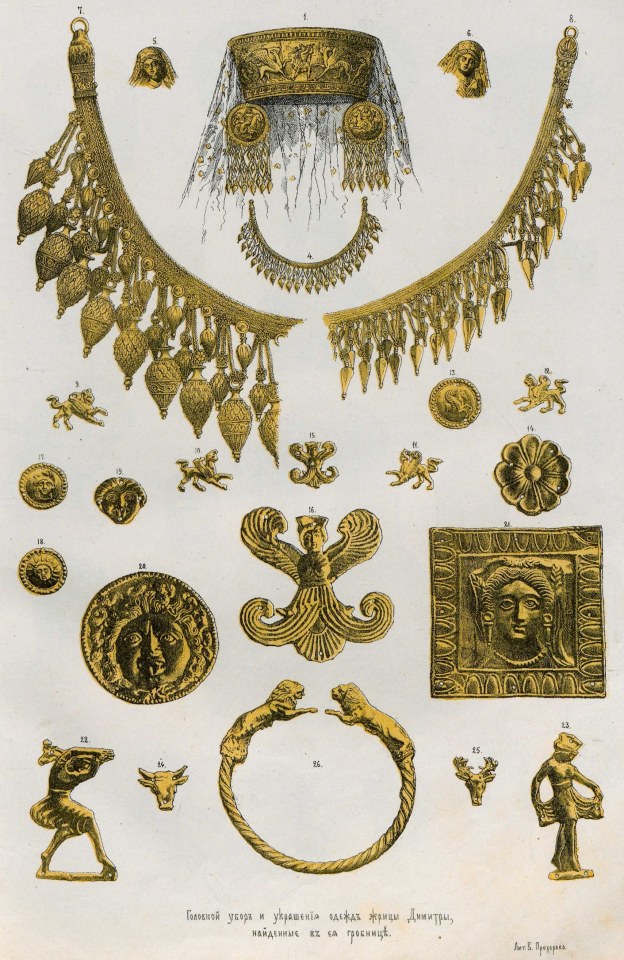
Skeleton of a Scythian queen and her jewelry, found in the Chertomlyk barrow, near Nikopol, Katerynoslavsk Governorate (today Dnipropetrovsk Oblast, Ukraine)
Headdress and ornaments of the clothes of the priestess Dimitra / Demeter, found in the tomb.
Vasily A. Prokhorov, 1881
9K notes
·
View notes
Photo

Priest-King or Diety, about 1600 BC, Hittite, North Syria, basalt with bone eyes.
Courtesy & currently located at the Cleveland Museum of Art, Ohio, USA. Photo taken by Daderot
454 notes
·
View notes
Text

figure of a fertility goddess | c. 3000 - 2500 BCE | cyprus, chalcolithic or bronze age
in the j. paul getty museum collection
251 notes
·
View notes
Text

"This acclaimed survey, now in an updated format with a new foreword by Ahdaf Soueif, offers a richly illustrated account of the history and discovery of astonishing funerary portraits from Greco-Roman Egypt. These remarkable paintings take their name from a district of Roman Egypt, whose inhabitants in the first three centuries CE included Greeks, Egyptians, Romans, Syrians, Libyans, Nubians, and Jews.
In the Egyptian tradition, they embalmed the bodies of their dead; but then placed a painted portrait over the mummified person, preserving the memory of each individual. Over one thousand portraits have so far been discovered―men, women, and children of all ages. Including almost two hundred of these paintings, Euphrosyne Doxiadis's informative text combines incisive scholarship with a compelling selection of images of enduring freshness and beauty.
Doxiadis's text sets the people and the paintings in their social, artistic, and geographical context, describing the techniques used and showing how the Fayum portraits relate to Byzantine icon painting, in a tradition that extends from ancient Greece to the Renaissance and on to the present day."
— The Mysterious Fayum Portraits: Faces from Ancient Egypt, by Euphrosyne Doxiadis, Ahdaf Soueif
100 notes
·
View notes
Photo
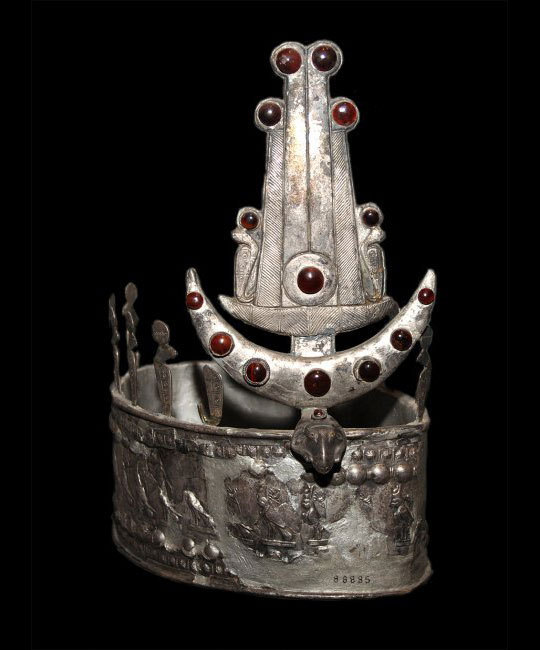
5th century Pre-christian Noubadian silver crown embossed with beryl, carnelian and glass, found in the royal cemetery of Ballana, Nubia, Egyptian traditions remained in Nubia even after the Christianization of Egypt
2K notes
·
View notes
Text

Blue chalcedony intaglio featuring a hero with griffins, Greco-Persian, 6th-5th century BC
from Christies
441 notes
·
View notes
Text

Lararium in the House of the Skeleton, Herculaneum, Italy.
Photography © Luis Adrián Rojas Yáñez
2K notes
·
View notes
Text

Lioness Devouring a Man, Phoenician Ivory Panel, c. 9th-8th century BCE. From the palace of Ashurnasirpal II, Nimrud, northern Mesopotamia, Iraq.
9K notes
·
View notes
Text

A Hittite king worshipping before a bull image of the storm god (Tarhunt?) from the city gate at Alaca Höyük. c. 1200 BCE? Village of Alacahüyük in the Alaca District of Çorum Province, Turkey
#polytheism#hittite polytheism#hittite gods#hellenism#hittite costume#bull#worship#altar#king#priest#baal#hadad#baal hadad#storm god#tarhunt
72 notes
·
View notes
Photo
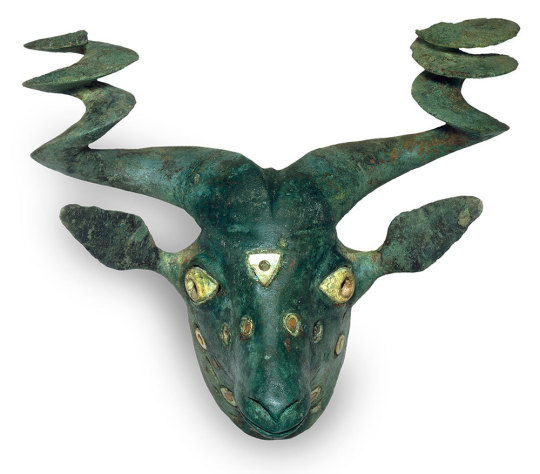
Markhor Goat Head - copper alloy, shell, and red stone - Sumerian, Early Dynastic III, c. 2550–2250 BCE
13K notes
·
View notes
Text

Knob with Incised Decoration
Canaanite, 14th-13th century BCE
This thick conical piece has a dowel hole in the narrow end. Incised on the wide faces are "sacred trees" composed of tendrils and papyrus stalks. On the edges are lotus blossoms.
53 notes
·
View notes
Note
I am interested in Canaanite and pre-Islamic Arabian religion. Can you recommend any books on those subjects? I am especially interested in goddess-worship, but nothing New Age or mystical.
I know a fair amount about ancient Egypt and a bit about Sumer from my reading, and I want to branch out.
I am delighted to have discovered your blog and will be exploring it in the future.
I'm glad you find it edifying! I recently drew up a bibliography for r/Semitic_Paganism that is hopefully useful. You can read the full post here, but three good academic works come to mind that focus on goddesses specifically:
- A Reassessment of Asherah by Steve Wiggins
- The Many Faces Of The Goddess by Izak Cornelius
- De Dea Syria by Lucian
I also have a few online texts with commentary and sources for further reading at:
https://sapiru.wordpress.com/categories/
— J. Sullivan
29 notes
·
View notes